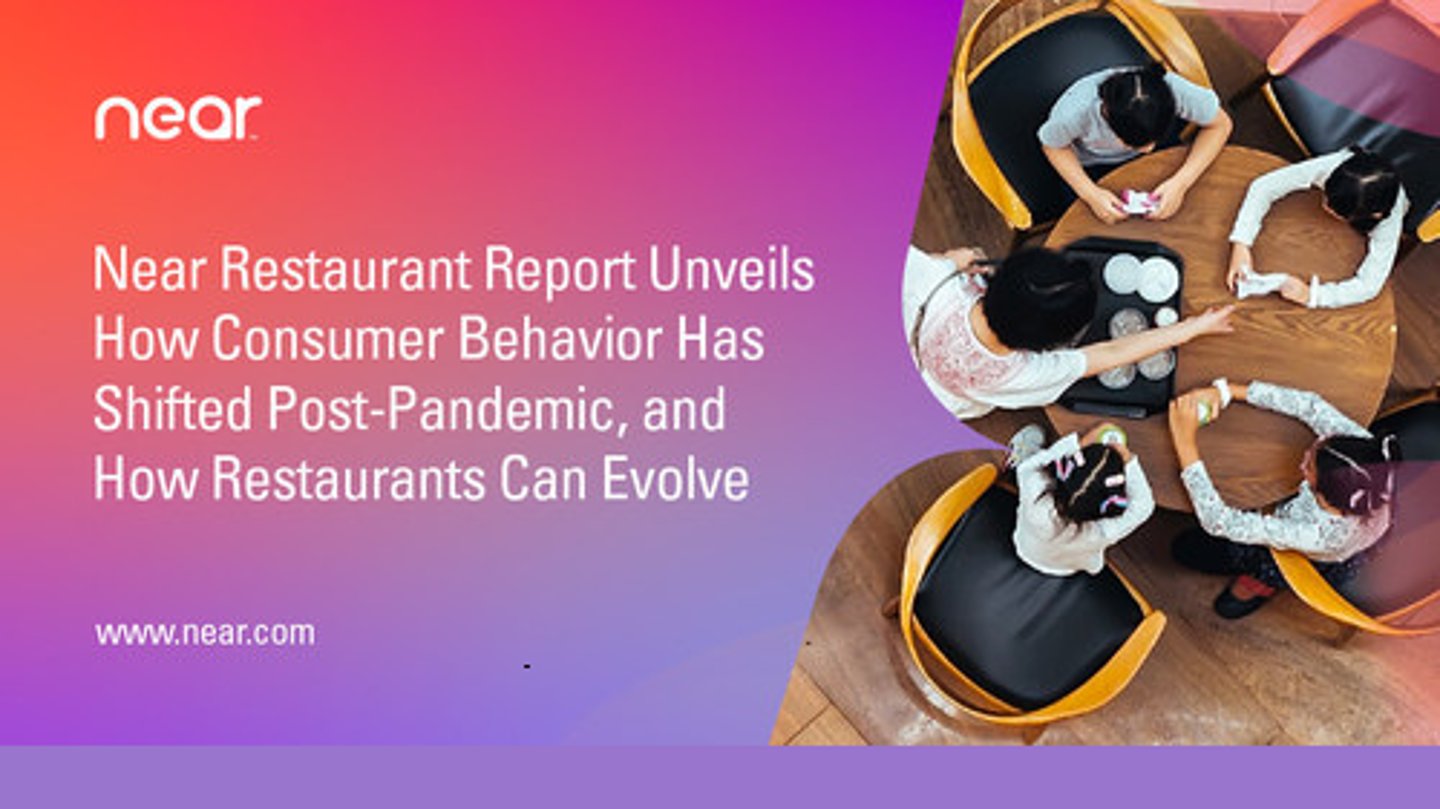Study: Majority of Diners Prefer to Order from a Waiter
Loyalty programs are embraced by younger generations and can oftentimes be a deciding factor when selecting a restaurant. Millennial and Gen Z diners are 71% more likely to participate in loyalty programs vs Boomers, according to the study, The New World of Consumer Behavior: Restaurants 2022.
The report, from Near, a provider of data intelligence, highlights significant shifts in consumer behavior from the onset of the pandemic to today. The report provides an outlook for the future of restaurant dining and outlines how restaurants can best respond to these consumer shifts.
For both restaurant and hotel customers, quality of service (as reflected in positive online reviews) remains a higher priority than technology features, reinforcing that the “human touch” is still at the heart of our industry, according to HT's 2021 Customer Engagement Technology Study.
Consumer dining behaviors have shifted significantly since the onset of the pandemic. One of the report's key findings is that there is no longer one single dining experience, and restaurants must adapt to the new range of options and conveniences that consumers have come to expect.
Diners were surveyed across generational lines in order to discover dining habits, preferences, and loyalties. The survey results are combined with Near's privacy-led human movement data—compliant-collected location data from mobile phones– to get a unique glimpse into dining patterns both at a macro level and also for specific regions and geographies. This includes identifying who today's diners are, where they eat, how often, and how far they're willing to travel. The report explores themes including whether people are eating out again or not, top priorities for restaurants, trends to watch, loyalty programs, as well the lifeline for countless restaurants for the past couple of years– takeout and delivery.
Key findings from the report include that 46% of people surveyed say outdoor dining is nice to have, and 7% say it's essential; meanwhile, 57% of people say takeout or delivery is nice to have, while only 8% say it's essential.
The importance of loyalty programs
One of the new priorities as a result of a more digitally focused dining experience is the increased importance of loyalty programs. The survey uncovered some key findings about how different generations perceive loyalty:
- Millennial and Gen Z diners are 71% more likely to participate in loyalty programs than Boomers.
- Younger diners also participate in about 2x the number of programs than the 60+ crowd.
- 50% of respondents overall said they are more likely to eat at restaurants where they're in the loyalty program – this was 60% for Gen Z and Millennials.
Elevating the dining experience
There is no longer one single dining experience. The most successful restaurants of the past few years are simply the ones that know their customers the best. They know their preferences and have adapted to offer precisely what their diners want. The top dining brands have also leveraged very creative and innovative approaches to build relationships with their customers, through physical and digital touch points.
As a result, top restaurants have been rewarded with increased customer loyalty and revenue. Key findings on consumer preferences around the dining experience include:
- 72% of diners enjoy the traditional waiter experience, compared to just 17% enjoying QR code ordering and 18% for kiosk ordering.
- Half of Gen Z and Millennial diners said they're more likely to eat at a restaurant if it's on a delivery app– compared to just 13% of respondents over the age of 45.
- 35% of respondents said they plan to dine at restaurants more often when the pandemic is over.
- 53% plan to practice the same habit of dining out, and 6% are unsure.
Study Methodology
This survey was conducted between February 24-27, 2022 with a total of 508 respondents in the United States, census-weighted by age, gender, income, and region. Additionally, Near studied pulled human movement data for restaurant locations in Los Angeles, New York, Houston, Chicago, Miami, and San Francisco/Oakland between June 1, 2021 – May 31, 2022. Reports used included Near Pinnacle's Estimated Visits, Time Spent, Visitor Home and Work Locations Insights, as well as Near's Geosocial Affinity, Estimated Visitors, and Cross-Visitation Reports.
Download the full report here.


